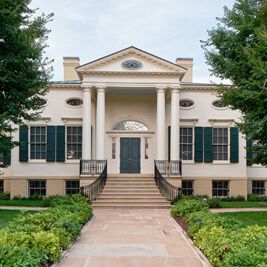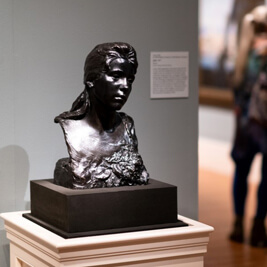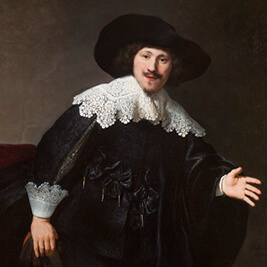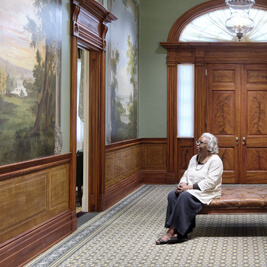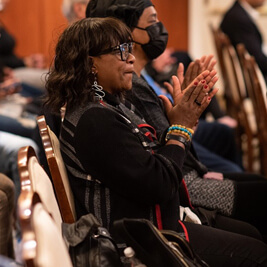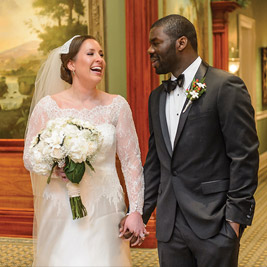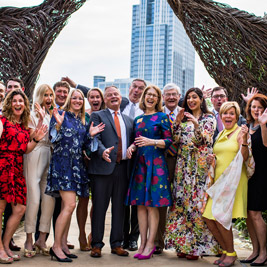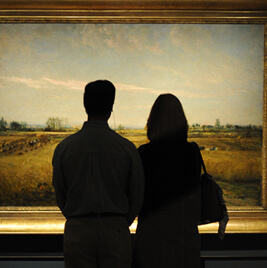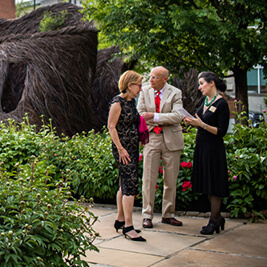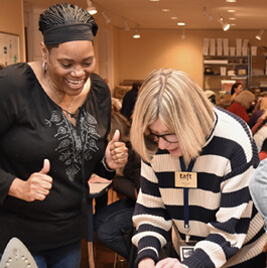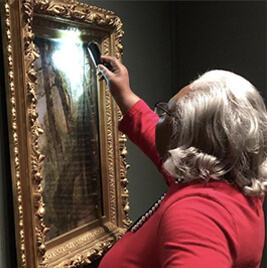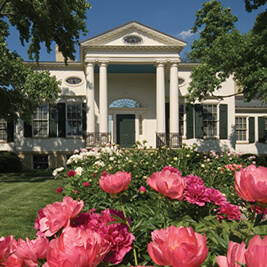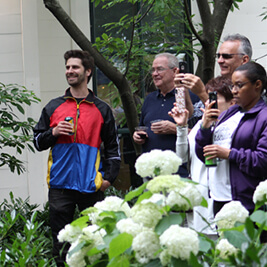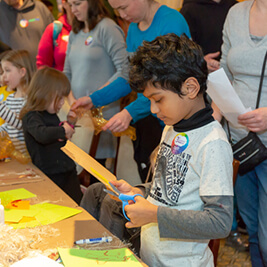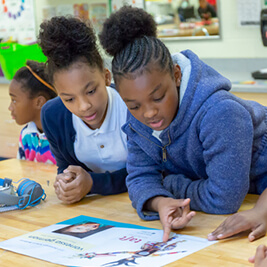- Do + See
- Dine + Host
- Give + Join
- Educate + Learn
A Splendid Century
Cincinnati’s “New Genius”: Nicholas Longworth and Lilly Martin Spencer
By Tamera Lenz Muente, Associate Curator
"A little bit of an ugly man came in. . . . Taking my hand and squeezing it hard, he looked at me with a keen, earnest gaze. . . . His manners are extremely rough and almost coarse, but his shrewd eyes and plain manner hide a man of very strong mind and high and generous heart."1
—Lilly Martin Spencer, describing her first impression of Nicholas Longworth
In 1841, a letter in a Marietta, Ohio, newspaper praised an exhibition of paintings by Lilly Martin, a “girl of eighteen, nearly all of whose life has been passed in the avocations and seclusion of a farm—who has never received one hour of instruction in the arts of painting or drawing.” The letter went on to say Martin’s work presented “the most astonishing instance of precocity and triumph over difficulty in the arts, which I have ever had the fortune to witness.”2 This statement caught the attention of Nicholas Longworth, Cincinnati art patron and second resident of the Taft Museum's historic house. Longworth wrote to his friend, the sculptor Hiram Powers, that “a new genius has sprung up at Marietta.”3 Within two months of Martin’s hometown exhibition, Longworth offered to send this “new genius” to Boston to study art. She instead made the journey to Cincinnati.
By the 1840s, artists had begun coming to Cincinnati from the surrounding region to learn more about art, as well as to exhibit and to sell their work, and many born in the city enjoyed success. In 1840, a writer for the New York Star asked, “Cincinnati! What is there in the atmosphere of Cincinnati, that has so thoroughly awakened the arts of sculpture and painting? It cannot surely be mere accident which gives birth to so many artists, all of distinguished merit, too.”⁴ Led by Longworth, the city’s wealthiest citizens sparked this awakening by personally encouraging, supporting, and promoting the fine arts.
In addition to offering financial support and purchasing works of art, Longworth connected young artists to potential teachers—in Martin’s case, the painter James Henry Beard—and invited artists to his home, where they could view his collection of paintings and sculpture. In letters to her mother, Martin recounted her visits with Longworth, the “ugly man” with “shrewd eyes and plain manner.” She described his grand parlor that held a “large and splendid painting by [Benjamin] West,” which, she wrote, “is most beautiful but I think I could do as well with the help of Mr. Beard.”5
In letters to her father, the ambitious Martin shared the challenges of securing portrait commissions, meeting client demands, and getting paid for her work: “I still hope for the better, for that is yet the best and only way. . . . As to my painting of itself, I am improving (Mr. Beard says) very fast.”6 In 1844, Martin married Benjamin Spencer. Four years later, in search of bigger opportunities—and with Longworth’s help—the couple left Cincinnati for New York. Unusually for a woman of her time, Spencer became the sole breadwinner for her large family, while her husband served as her business manager, assisted with household duties, and tended to their seven children. Spencer’s scenes of domestic life—sometimes blissful, sometimes humorous—made her the most successful female American artist prior to the Civil War.1
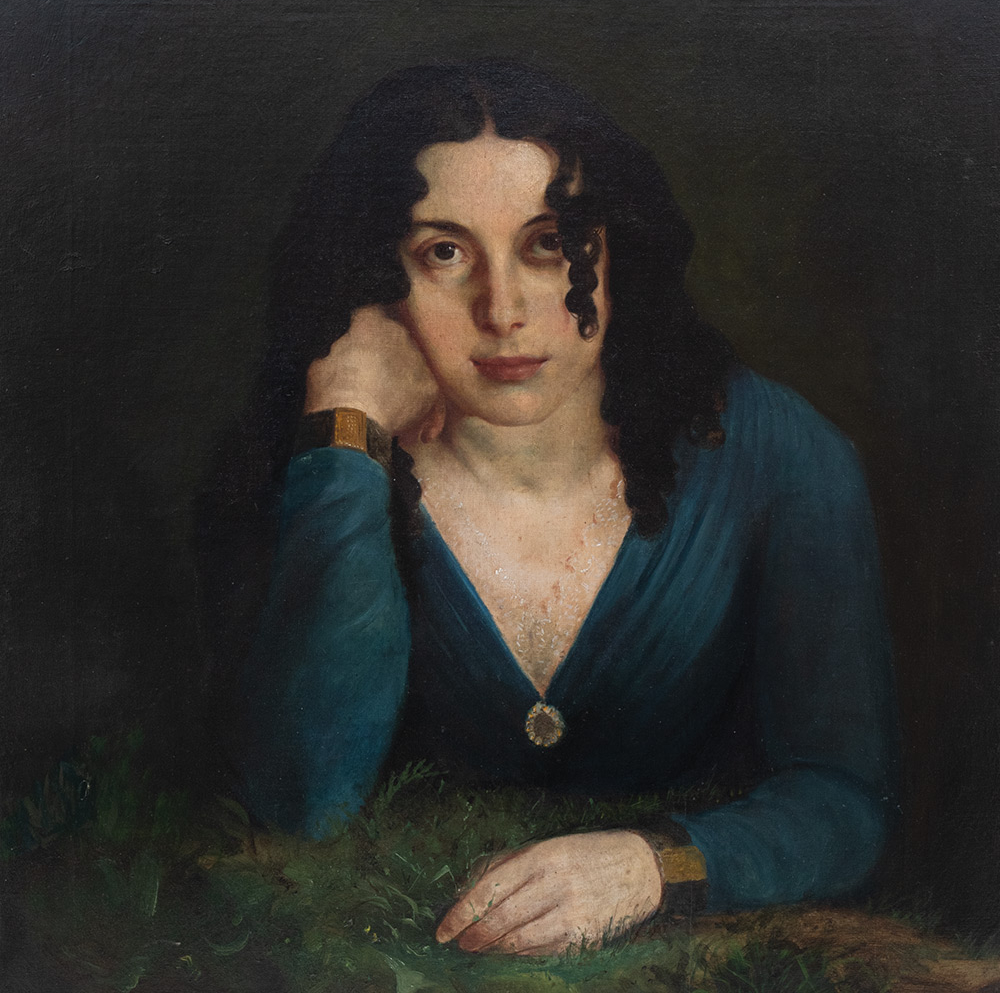
Lilly Martin Spencer, Self-Portrait (detail), about 1840, oil on canvas. Ohio History Connection, Columbus, Ohio
1. Lilly Martin [Spencer], letter to her mother, Angelique Martin, November 3, 1841, Collection of the Campus Martius Museum, Marietta, Ohio.
2. Edward D. Mansfield, letter to the Marietta Intelligencer, August 26, 1841.
3. Nicholas Longworth, letter to Hiram Powers, October 23, 1841, Cincinnati History Library and Archives.
4. New York Star, 1840, quoted in Donald R. MacKenzie, “The Itinerant Artist in Early Ohio,” Ohio History Journal 73, no. 1 (Winter 1964): 46.
5. Lilly Martin [Spencer], letter to Angelique Martin, November 3, 1841, Collection of the Campus Martius Museum, Marietta, Ohio.
6. Lilly Martin [Spencer], letter to her father, Giles Martin, March 31, 1842, Ohio History Connection Archives & Library
